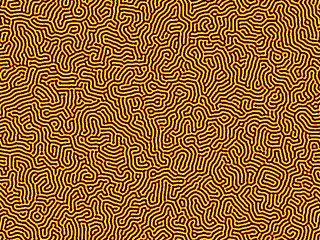I found the talk interesting. I already knew most of the story since I had been following the trial, but I did learn a few new details. Quick recap:
- Dover area school board tries to get ID creationism into its schools.
- Teachers refuse to teach the tripe; administrators come in to read pro-ID statement to students.
- Several families (including the Kitzmillers) sue school district for establishment violation.
- Pro bono lawyers backed by the ACLU and NCSE come to town and kick ass.
- Textbook and rationale proven to be recycled biblical creationism.
- School board members and textbook suppliers caught lying on the stand.
- Intelligent Design proven to be sectarian religion and hence unconstitutional.
- Judge Jones writes scathing decision against ID and the board.
- Creationist school board members swept out of office come election day.
- And they all lived happily ever after, The End!
So what new tidbits did I learn? For one, I learned that everything (except the name) about ID was recycled creationism. For example, Mr. Harvey showed a slide which compared a page from the ID textbook Of Pandas And People next to the same page from an earlier draft of the book. Every word was exactly the same except that everywhere that the draft said "Creationism," the official textbook said "Intelligent Design." (I actually knew that part) I always knew that ID was just repackaged creationism, but I (naively) thought that at least Michael Behe's argument of Irreducible Complexity of the bacterial flagellum was original. Boy was I wrong! It turns out that that exact same argument had been used by Creation Science.
I also learned some new details about the "perjury" ("" used because perjury is technically a legal term and no charges have yet been brought) of School Board Christocrat William Buckingham. This was good!
In the year prior to the whole bruhaha, Mr. Buckingham had made numerous pro-creationist an overtly Christian statements at several school board meetings. Since the plaintiffs could win the case by simply showing that pushing religious views was the motivation behind introducing ID, Billy had to deny all such statements at the trial, under oath, which he did. Of course, the next logical question would be why he never denied making such statements when it was being reported all over the local news. Mr. Harvey asked Billy questions to the effect of (paraphrased)
"Are you saying that you were completely unaware of the statements that were being attributed to you on the front page of the newspaper that you get delivered to your doorstep every morning?" To which the pious Mr. Buckingham replied (more or less) " I had no idea!"
After nailing him down good wth several questions to that effect, Steve Harvey then brought out the old television news clip. He showed the clip to us at his talk. I had heard about it, but that was the first time I'd seen it. You can watch the whole clip here. But I have decided to only embed the "proof of perjury" remix edited by Janiebelle. Enjoy!
After showing him the clip, Harvey asked Buckingham to explain himself. He said that since the whole creationism controversy that was in the news was dominating his thoughts at the time, he let it slip in front of the cameras. Stephen Harvey was not expecting to nail his prey so early. He admitted to us that these statements slipped right past him because he was already thinking about the next question. He did realize that something big had just happened. He knew Billy had dropped a bomb when the court stenographer's jaw dropped to the floor.
GOTCHA!!!!




